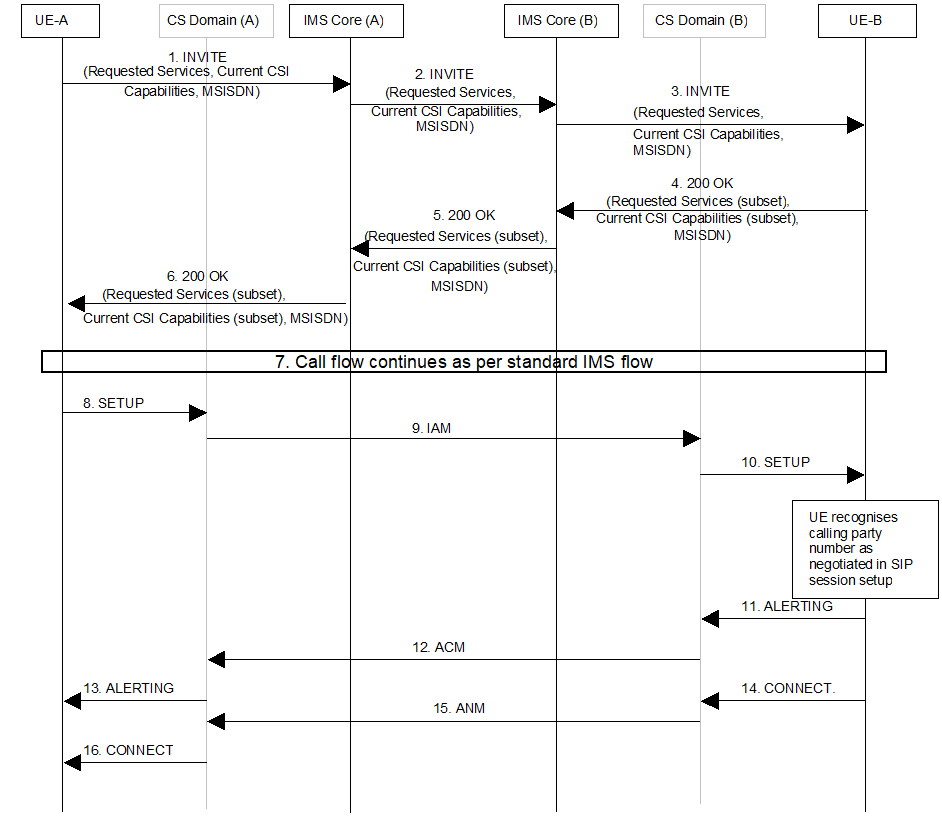Content for TS 23.279 Word version: 18.0.0
8.4 User adds a CS call to an ongoing IMS session p. 22

Step 1.
The UE-A sends the SIP INVITE request to the IMS Core (A) using the address obtained during registration.
The SIP INVITE may contain CSI specific information including MSISDN and current CSI capabilities in addition to the standard information for the desired IMS service.
Step 2.
The IMS-Core (A) forwards the SIP INVITE request to the IMS Core (B)
Step 3.
The IMS-Core (B) forwards the SIP INVITE request to UE-B.
Step 4.
The UE-B should send a provisional response i.e. 18x (or a final response) and include the MSISDN of UE-B. If the session includes media requiring resource reservation then same principles apply as described in clause 8.3.2, except that the UE-B should reply with a provisional response to allow the user to answer from other UEs.
Step 5.
The IMS Core (B) forwards the provisional or final response to IMS Core (A).
Step 6.
The IMS Core (A) forwards the provisional or final response to UE-A
Step 7.
The IMS flow continues as standard.
Step 8.
The UE-A initiates a CS call by sending a SETUP message towards UE-B.
Step 9.
The CS domain of the originating network sends an IAM message to the CS domain of the terminating network.
Step 10.
The CS domain of the terminating network sends a SETUP message IAM of UE-A to the UE-B.
UE-B recognises the calling party number as negotiated in SIP session setup.
Step 11.
The UE-B sends ALERTING message to UE-A.
Step 12.
The CS domain of the terminating network sends an ACM message to the CS domain of the originating network.
Step 13.
The CS domain of the originating network sends an ALERTING message to the UE-A.
Step 14.
The UE-B sends CONNECT message to UE-A.
Step 15.
The CS domain of the terminating network sends an ANM message to the CS domain of the originating network.
Step 16.
The CS domain of the originating network sends an CONNECT message to the UE-A.